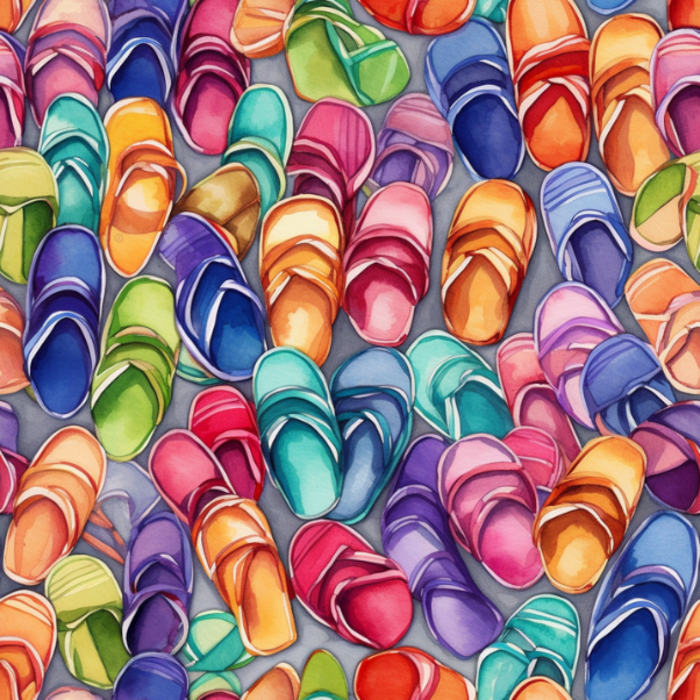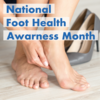Step into Foot-Healthy Bliss with the Perfect Pair of Sandals

Imagine this: the warm sun kissing your skin, a gentle breeze caressing your toes, and the freedom of movement as you stroll along sandy beaches or traverse rugged trails. Sandals, the ultimate embodiment of comfort and style, offer a gateway to foot-healthy bliss. But with countless styles and choices available, how do you find the perfect pair that not only complements your fashion sense but also promotes foot health?
Let's delve into the realm of sandals, unravelling the critical connection between foot health and the perfect pair of sandals. We explore the enchanting world of foot-healthy fashion, revealing the types of sandals that elevate your activities, while cautioning against styles that may put your feet at risk. From casual walks to adventurous hikes, we've got you covered with expert insights and invaluable tips.
So, whether you're seeking the ideal sandals for a beach vacation, long walks through the city, or even formal occasions, join us on this journey as we uncover the secrets to selecting sandals that will revolutionize your foot health. Get ready to stride with confidence, embracing the harmony of function and fashion, as we guide you towards the sandals that will be your trusty companions in every step you take.
The Importance of Foot Health
Before delving into the specifics of sandals, let's understand why foot health is crucial. Our feet bear the weight of our bodies and provide the necessary support for everyday activities such as walking, running, and standing. Neglecting foot health can lead to various issues, including foot pain, blisters, corns, calluses, and even more severe conditions like plantar fasciitis.
Wearing appropriate footwear, such as sandals designed for foot health, can help prevent and alleviate foot problems. Let's explore the critical factors to consider when choosing sandals for optimal foot health.
Key Factors for Foot-Healthy Sandals
Arch Support: Adequate arch support is essential for maintaining the natural alignment of the feet. Sandals with built-in arch support or those that accommodate orthotic inserts can provide stability and reduce strain on the arches. Look for sandals with contoured footbeds or cushioned arch support.
Cushioning: Cushioning plays a crucial role in absorbing shock and reducing impact on the feet. Opt for sandals with cushioned footbeds or those that incorporate technologies like EVA foam or memory foam. These materials provide excellent shock absorption, reducing stress on the feet and joints.
Toe Protection: Toes need protection from accidental bumps or stubs, especially during outdoor activities. Sandals with enclosed toes or reinforced toe boxes offer additional safety and prevent injuries.
Adjustability: The ability to adjust the fit of the sandals is vital for optimal foot health. Look for sandals with adjustable straps or closures that allow you to customize the fit to your foot's unique shape and size. A secure fit ensures stability and prevents excessive friction.
Stability and Traction: Ensure that the sandals provide adequate stability and traction to prevent slips and falls. Look for outsoles with non-slip or textured patterns that offer good grip on various surfaces.
Removable insoles: Sandals sometimes come with footbeds that can be replaced by your own orthotic insoles. This can be very beneficial if you have lingering foot issues that must be addressed with your own personalized footbed
Now that we understand the key factors for foot-healthy sandals, let's explore the types of sandals suitable for different activities.
Types of Sandals for Various Activities
Casual Walking: For casual walks or everyday use, opt for sandals with good arch support, cushioning, and shock absorption. Look for designs with adjustable straps for a secure fit. Brands like Birkenstock, Finn Comfort, and ECCO.
Beach or Pool Activities: When heading to the beach or pool, choose sandals that are water-friendly and quick-drying. Look for sandals made from materials like rubber or waterproof synthetic fabrics. Flip-flops or slides with non-slip soles are popular options for these activities.
Hiking and Outdoor Adventures: For hiking or other outdoor activities, choose sandals specifically designed for rugged terrains. Look for models with durable outsoles, toe protection, and secure straps.
Formal or Dressy Occasions: Sandals can also be a stylish option for formal or dressy occasions. Look for sandals made from high-quality materials like leather or suede. Opt for designs that provide adequate support, cushioning, and a secure fit. Mephisto, Vionic, and Gabor all have great options.
While the types of sandals mentioned above are generally suitable for specific activities, it is important to consider individual foot characteristics and any existing foot conditions. Always consult with a healthcare professional for personalized recommendations.
Sandals to Avoid for Certain Activities
While sandals offer many benefits, some styles may not be suitable for certain activities. Here are a few types of sandals to avoid for specific activities:
Flip-Flops for Long Walks: Flip-flops lack proper arch support, cushioning, and stability. They are not designed for extended periods of walking or high-impact activities. Prolonged use of flip-flops for long walks can lead to foot fatigue, arch strain, and even heel pain. Consider a sandal with a backstrap for extended walks and keep flip flops for the beach and BBQ events.
Flat Sandals for Hiking: Flat, thin-soled sandals without proper traction are not ideal for hiking or walking on uneven terrains. They do not provide sufficient support or protection against potential hazards, increasing the risk of foot injuries.
Ill-Fitting or Narrow Sandals: Sandals that are too tight or narrow can cause blisters, corns, and calluses due to excessive friction. They can also restrict foot movement and lead to foot pain or discomfort. Sandals with Velcro or buckles can help with a wider foot.
Remember, the suitability of sandals for specific activities varies based on individual preferences and foot health needs. It is crucial to choose sandals that provide the necessary support and protection for your feet during different activities. Check out our selection of Men's and Women's to get an understanding of which sandal could be effective for your activities.
Final Thoughts
In conclusion, choosing foot-healthy sandals is crucial for maintaining optimal foot health and preventing various foot problems. Consider factors such as arch support, cushioning, adjustability, and breathability when selecting sandals for different activities. Be mindful of the specific types of sandals to avoid for activities like long walks, hiking, or pool side activities. Remember, consulting with a healthcare professional can provide personalized recommendations based on your individual foot health needs.
FAQ: Sandals and Foot Health
Q: Can sandals cause foot problems?
A: Improperly fitting or unsupportive sandals can contribute to foot problems such as blisters, corns, calluses, and arch strain. Choosing sandals with adequate support and cushioning can help prevent these issues.
Q: Are flip-flops bad for my feet?
A: Flip-flops are generally not recommended for extended walking or high-impact activities. They lack arch support and cushioning, which can lead to foot fatigue, strain, and heel pain.
Q: Can I wear sandals if I have flat feet?
A: Yes, individuals with flat feet can wear sandals. However, it is crucial to choose sandals with good arch support and stability to maintain proper foot alignment and prevent overpronation.
Q: Can sandals be worn with orthotics or custom insoles?
A: Many sandals offer removable footbeds, allowing for the use of orthotics or custom insoles. Check if the sandals have a removable insole or consult with a footwear professional to find compatible options.
Q: How can I prevent blisters while wearing sandals?
A: To prevent blisters, choose sandals with a secure fit and avoid styles with rough or abrasive materials. Applying a protective blister pad or using moisture-wicking socks can also help reduce friction and blister formation.
Q: Can I wear sandals during pregnancy?
A: Yes, pregnant women can wear sandals. Look for sandals with adjustable straps to accommodate foot swelling. Ensure the sandals provide adequate support and comfort to alleviate any added strain on the feet.
Q: How often should I replace my sandals?
A: The lifespan of sandals depends on various factors like frequency of use and the quality of materials. As a general guideline, consider replacing sandals every 12 to 24 months in Canada, or when they show signs of significant wear and tear.














